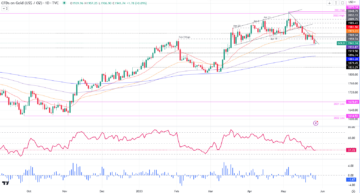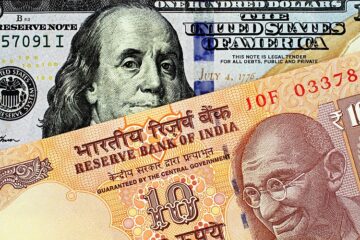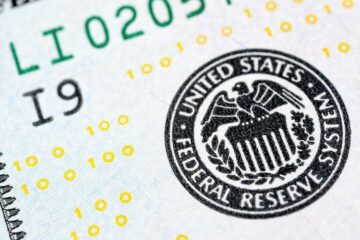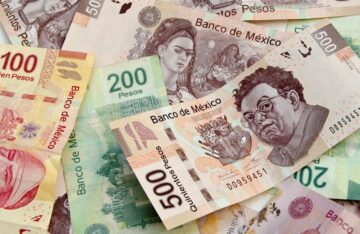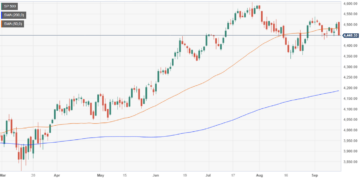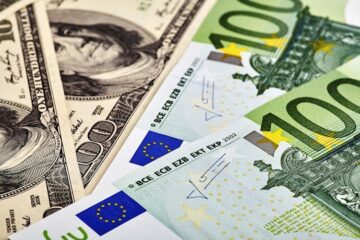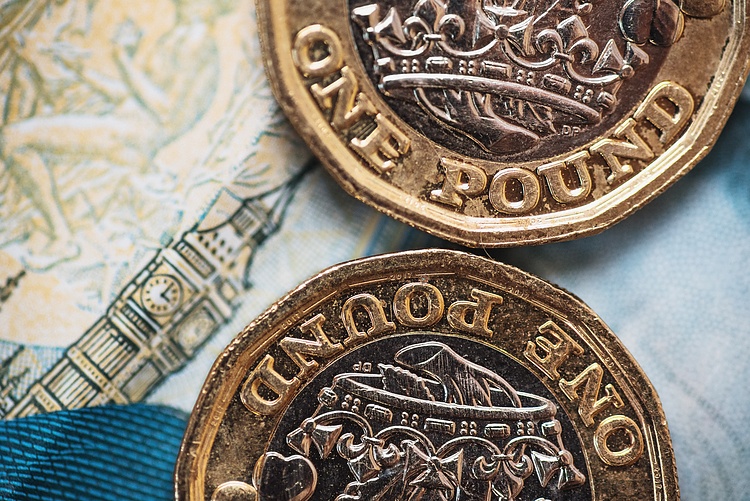
- Pound Sterling faces selling pressure despite the UK economy turning out more resilient in June than expected.
- Upbeat United Kingdom factory data showcase optimism among producers in spite of a highly-inflated price environment.
- Monthly Industrial and Manufacturing Production data grew by 1.8% and 2.4% in June, respectively.
The Pound Sterling (GBP) seems to be grabbing a Currency of the Week tag as the United Kingdom’s factory data for June and the April-June Gross Domestic Product (GDP) grew stronger than expectations. The GBP/USD pair fails to maintain recovery as market sentiment turns sour on stronger-than-anticipated United States Producer Price Index (PPI) data.
Upbeat United Kingdom factory data demonstrate optimism among producers in spite of high inflation and tight monetary policy conditions. Stronger-than-expected GDP growth indicates that the economy will manage to avoid recession comfortably. Robust economic growth would allow Bank of England (BoE) policymakers to raise interest rates further. After solid GDP growth, investors will shift their focus to the labor market data, which will be published on Tuesday at 06:00 GMT.
Daily Digest Market Movers: Pound Sterling drops as market mood dampens
- Pound Sterling rises strongly as Q2 GDP data outperforms market expectations.
- Monthly GDP came out of contraction and grew by 0.5% vs. expectations of 0.2% growth. In the January-March quarter, the growth rate contracted by 0.1%.
- Quarterly GDP grew by 0.2% while analysts had forecasted a stagnant performance. The annual growth rate was 0.4%, doubled the consensus and the prior release of 0.2%.
- Monthly Industrial Production for June expanded strongly by 1.8% against the estimates for 0.1% growth. In May, the economic data contracted by 0.6%. Annual data rose significantly to 3.1%.
- Also, Manufacturing Production grew strongly by 2.4% against 0.2% as forecasted on a monthly basis.
- No doubt, UK factory data beat estimates by a wide margin and demonstrates fresh optimism among producers despite aggressively tight interest rate policy by the Bank of England.
- Stronger-than-expected UK growth rate indicates that the economy could manage to avoid recession this year.
- The reasoning behind sheer optimism among producers seems to be easing inflationary pressures and resilient consumer spending.
- Upbeat factory data would comfort BoE policymakers and allow them to raise interest rates further so that core inflation could return to a 2% rate quickly as fears of recession recede sharply.
- The BoE has already raised interest rates to 5.25% and further policy tightening is widely anticipated.
- Market mood dampens as investors remain worried that China could retaliate against a ban on US investment in specific hi-tech Chinese industries.
- The US Dollar Index (DXY) turns sideways around 102.50 after a solid recovery as the United States Consumer Price Index (CPI) rose moderately in July due to rising house rentals and a minor recovery in gasoline prices.
- US inflation advances at a 0.2% pace in July, in line with the Federal Reserve’s (Fed) desired rate of 2% core inflation growth. This would allow the Fed to maintain interest rates steadily and provide a comma to its aggressive rate-tightening spell.
- US inflation looks good on its softening path along with a historically low Unemployment Rate, which would allow the economy to avoid a recession.
- Meanwhile, San Francisco Fed Bank President Mary Daly joins Philadelphia Fed Bank President Patrick Harker and New York Fed President John Williams, saying that the central bank could discuss rate cuts next year but is largely dependent on the economy and inflation.
Technical Analysis: Pound Sterling sustains above 1.2700
Pound Sterling rebounds sharply above the round-level resistance of 1.2700 after remaining sideways around 1.2680 following UK factory data that beat expectations. The Cable comes out of the fire but is still in the frying pan as it trades below the 20 and 50-day Exponential Moving Averages (EMAs). On Thursday, the asset attempted to climb above the 20-day EMA but faced an intense sell-off and turned vulnerable. The major fail to return to the Rising Channel chart pattern after a breakdown formed on the daily chart.
Pound Sterling FAQs
The Pound Sterling (GBP) is the oldest currency in the world (886 AD) and the official currency of the United Kingdom. It is the fourth most traded unit for foreign exchange (FX) in the world, accounting for 12% of all transactions, averaging $630 billion a day, according to 2022 data.
Its key trading pairs are GBP/USD, aka ‘Cable’, which accounts for 11% of FX, GBP/JPY, or the ‘Dragon’ as it is known by traders (3%), and EUR/GBP (2%). The Pound Sterling is issued by the Bank of England (BoE).
The single most important factor influencing the value of the Pound Sterling is monetary policy decided by the Bank of England. The BoE bases its decisions on whether it has achieved its primary goal of “price stability” – a steady inflation rate of around 2%. Its primary tool for achieving this is the adjustment of interest rates.
When inflation is too high, the BoE will try to rein it in by raising interest rates, making it more expensive for people and businesses to access credit. This is generally positive for GBP, as higher interest rates make the UK a more attractive place for global investors to park their money.
When inflation falls too low it is a sign economic growth is slowing. In this scenario, the BoE will consider lowering interest rates to cheapen credit so businesses will borrow more to invest in growth-generating projects.
Data releases gauge the health of the economy and can impact the value of the Pound Sterling. Indicators such as GDP, Manufacturing and Services PMIs, and employment can all influence the direction of the GBP.
A strong economy is good for Sterling. Not only does it attract more foreign investment but it may encourage the BoE to put up interest rates, which will directly strengthen GBP. Otherwise, if economic data is weak, the Pound Sterling is likely to fall.
Another significant data release for the Pound Sterling is the Trade Balance. This indicator measures the difference between what a country earns from its exports and what it spends on imports over a given period.
If a country produces highly sought-after exports, its currency will benefit purely from the extra demand created from foreign buyers seeking to purchase these goods. Therefore, a positive net Trade Balance strengthens a currency and vice versa for a negative balance.
- SEO Powered Content & PR Distribution. Get Amplified Today.
- PlatoData.Network Vertical Generative Ai. Empower Yourself. Access Here.
- PlatoAiStream. Web3 Intelligence. Knowledge Amplified. Access Here.
- PlatoESG. Automotive / EVs, Carbon, CleanTech, Energy, Environment, Solar, Waste Management. Access Here.
- PlatoHealth. Biotech and Clinical Trials Intelligence. Access Here.
- ChartPrime. Elevate your Trading Game with ChartPrime. Access Here.
- BlockOffsets. Modernizing Environmental Offset Ownership. Access Here.
- Source: https://www.fxstreet.com/news/pound-sterling-rebounds-as-central-bank-could-announce-pause-sooner-202308100746
- :has
- :is
- :not
- $UP
- 1
- 102
- 2%
- 20
- 2022
- 32
- 50
- a
- above
- access
- According
- Accounting
- Accounts
- achieved
- achieving
- Ad
- Adjustment
- advances
- After
- against
- aggressive
- All
- All Transactions
- allow
- along
- already
- among
- an
- analysis
- Analysts
- and
- Animate
- annual
- Anticipated
- ARE
- around
- AS
- asset
- At
- attempted
- attract
- attractive
- averaging
- avoid
- back
- Balance
- Ban
- Bank
- Bank of England
- Bank of England (BOE)
- basis
- BE
- behind
- below
- benefit
- between
- Billion
- BoE
- borrow
- Breakdown
- businesses
- but
- buyers
- by
- cable
- came
- CAN
- cautious
- central
- Central Bank
- Channel
- Chart
- China
- chinese
- climb
- comes
- comfort
- conditions
- Consensus
- Consider
- consumer
- consumer price index
- content
- contraction
- Core
- core inflation
- could
- country
- CPI
- created
- credit
- Currency
- cuts
- daily
- data
- day
- decided
- decisions
- Demand
- demonstrate
- demonstrates
- dependent
- desired
- Despite
- difference
- Digest
- direction
- directly
- discuss
- does
- Dollar
- dollar index
- Domestic
- doubled
- doubt
- Drops
- due
- Dxy
- easing
- Economic
- Economic growth
- economy
- EMA
- employment
- encourage
- ends
- England
- Environment
- estimates
- exchange
- expanded
- expectations
- expected
- expensive
- exponential
- exports
- extra
- faced
- faces
- factor
- factory
- FAIL
- fails
- Fall
- Falls
- FAQ
- fears
- Fed
- Federal
- Federal Reserve’s
- Fire
- Focus
- following
- For
- foreign
- foreign exchange
- foreign investment
- formed
- Fourth
- Francisco
- fresh
- from
- further
- FX
- gasoline
- gauge
- GBP
- GBP/USD
- GDP
- gdp growth
- generally
- given
- Global
- GMT
- goal
- good
- goods
- gross
- Growth
- had
- Health
- hi-tech
- High
- High inflation
- higher
- highly
- historically
- House
- HTTPS
- if
- Impact
- important
- imports
- in
- index
- indicates
- Indicator
- Indicators
- industrial
- Industrial Production
- industries
- inflation
- inflation rate
- Inflationary
- Inflationary pressures
- influence
- influencing
- interest
- INTEREST RATE
- Interest Rates
- Invest
- investment
- Investors
- Issued
- IT
- ITS
- John
- Joins
- jpg
- July
- june
- Key
- Kingdom
- known
- labor
- labor market
- largely
- likely
- Line
- LOOKS
- Low
- lowering
- maintain
- major
- make
- Making
- manage
- manufacturing
- Margin
- Market
- Market Data
- market sentiment
- May..
- measures
- minor
- module
- Monetary
- Monetary Policy
- money
- monthly
- mood
- more
- most
- Movers
- moving
- moving averages
- negative
- net
- New
- New York
- New York Fed
- next
- of
- official
- offsets
- oldest
- on
- only
- Optimism
- or
- otherwise
- out
- Outperforms
- over
- Pace
- pairs
- PAN
- Park
- path
- patrick
- Pattern
- People
- performance
- period
- philadelphia
- Place
- plato
- Plato Data Intelligence
- PlatoData
- policy
- policymakers
- positive
- pound
- pound sterling
- ppi
- president
- pressure
- pressures
- price
- Prices
- primary
- Prior
- producer
- Producers
- produces
- Product
- Production
- projects
- provide
- published
- purchase
- purely
- put
- Q2
- Quarter
- quickly
- raise
- raised
- raising
- Rate
- Rates
- recession
- recovery
- release
- Releases
- remain
- remaining
- rentals
- reserves
- resilient
- Resistance
- return
- Rises
- rising
- robust
- ROSE
- San
- San Francisco
- saying
- scenario
- seeking
- seems
- sell-off
- Selling
- sentiment
- Services
- shift
- showcase
- sideways
- sign
- significant
- significantly
- single
- Slowing
- So
- solid
- specific
- SPELL
- Spending
- Spite
- starts
- States
- steady
- sterling
- Still
- Strengthen
- Strengthens
- strong
- stronger
- strongly
- such
- TAG
- than
- that
- The
- the Fed
- the UK
- the United Kingdom
- the world
- their
- Them
- therefore
- These
- this
- this year
- thursday
- tightening
- to
- too
- tool
- trade
- traded
- Traders
- trades
- Trading
- trading pairs
- Transactions
- try
- Tuesday
- Turned
- turns
- Uk
- unemployment
- unemployment rate
- unit
- United
- United Kingdom
- United States
- us
- US Dollar
- US Dollar Index
- value
- vice
- vs
- Vulnerable
- was
- week
- What
- whether
- which
- while
- wide
- widely
- will
- Williams
- with
- world
- worried
- would
- year
- york
- zephyrnet

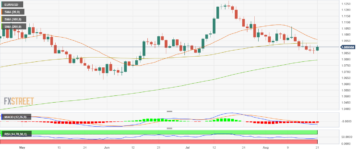
![AAPL Elliott Wave analysis trading lounge daily chart [Video]](https://platoaistream.net/wp-content/uploads/2024/02/aapl-elliott-wave-analysis-trading-lounge-daily-chart-video-360x209.png)


